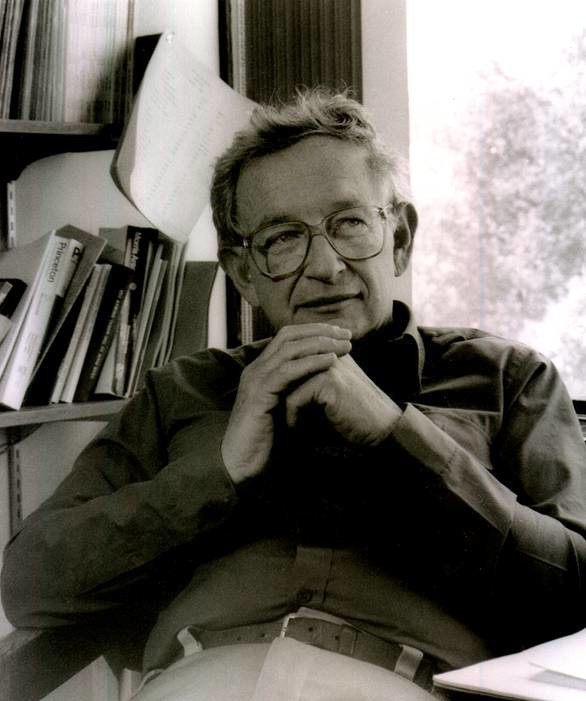菲利普·安德森 Philip Warren Anderson
20200705
注解: 手指向下或右滑,翻到下一页,向上或左滑,到上一页。
菲利普·安德森

菲利普·沃伦·安德森(英语:Philip Warren Anderson,1923年12月13日-2020年3月29日),美国物理学家。 物理上,在反铁磁性、高温超导等领域有重大贡献。[1][2]
因“对磁性和无序体系电子结构的基础性理论研究”与内维尔·莫特、约翰·凡扶累克一同获得1977年的诺贝尔物理学奖。[3]
生平
1923年出生于印第安纳波利斯并且在伊利诺伊州的厄巴纳度过他的童年,1940年他从厄巴纳的高级中学毕业。之后于哈佛大学完成了的学士学位并进入研究所。在约翰·凡扶累克的指导下学习物理。战争期间,安德森曾在美国海军研究实验室待上一段时间。1949年到1984年,安德森任职于新泽西的贝尔实验室,广泛地研究了凝态物理的许多问题。这段期间他发现了局部化(Anderson localization)的概念;写下了安德森哈密顿算符以描述过渡金属系统中的电子。另外他还建议粒子物理学家寻找产生粒子质量的机制(后来所谓的希格斯机制);发展了超导体BCS理论中的计算方法。1963年被选为美国文理科学院院士。 [4]
1967年到1975年,安德森在剑桥大学担任理论物理学的教授。1977年,由于“对磁性和无序体系电子结构的基础性理论研究”他与内维尔·莫特、约翰·凡扶累克一同获得了诺贝尔物理学奖。这个研究为电子元件开关与记忆的技术提供了理论基础,对于后来电脑发展有重要贡献。1982年他获得了美国国家科学奖章。自1984起,他从贝尔实验室退休,到了普林斯顿大学主持约瑟·亨利物理教授席位。2006年何塞·索勒的一份分析统计比较了论文参考文献与引用数,指出安德森是世界上最有“创造力”的物理学家。 [5]
著作
- 1963年 《Concepts in Solids》 ISBN 9810232314
- 1984年 《Basic Notions in Condensed Matter Physics》 ISBN 0201328305
- 1994年 《A Career in Theoretical Physics》 ISBN 9812388664
- 1997年 《The Theory of Superconductivity in the High Temperature Cuprates》 ISBN 0691043655
参考资料
- ^ Condensed-matter physics pioneer Philip Anderson dies aged 96
- ^ In memoriam: Philip Anderson
- ^ The Nobel Prize in Physics 1977. 诺贝尔基金会. [2011-08-03].
- ^ Book of Members, 1780-2010: Chapter A (PDF). American Academy of Arts and Sciences. [18 April 2011].
- ^ World's most creative physicist revealed - physicsworld.com. [2011-08-03]. (原始内容存档于2011-11-19).
外部链接
- Philip W. Anderson, Autobiography (The Nobel Foundation, 1977, 2005).
- Philip Warren Anderson
- Anderson's Princeton web page
- Video clip of Philip Anderson speaking at the International Conference on Complex Systems, Hosted by the New England Complex Systems Institute (NECSI)
- Oral History interview transcript with Philip W. Anderson 30 March, 30 May, & 23 November 1999, American Institute of Physics, Niels Bohr Library and Archives
- Oral History interview transcript with Philip W. Anderson 13 July 1987, American Institute of Physics, Niels Bohr Library and Archives